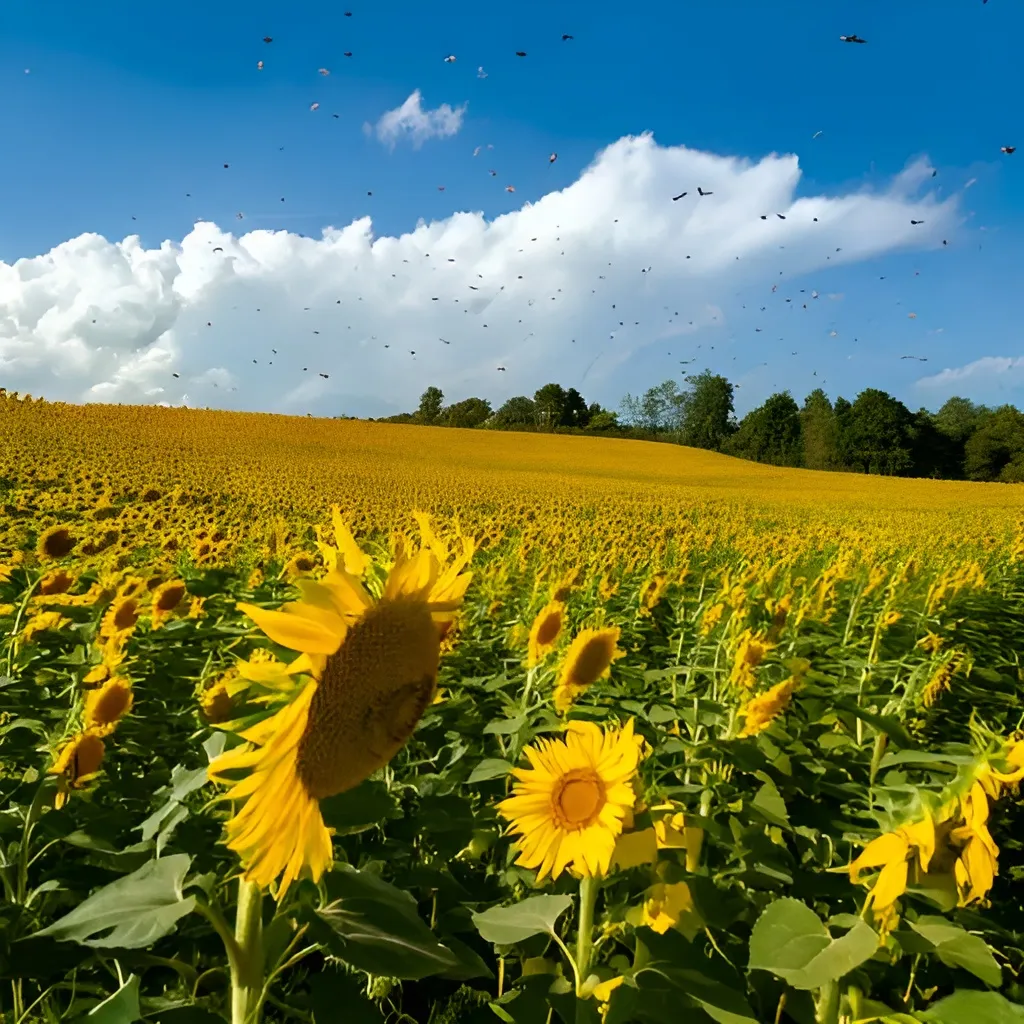
In Sunflower Fields: Pest and Weed Control
Black Cutworm (Agrotis ipsilon) in Sunflowers
Chemical Control
Surface Application: Chemical control is implemented in fields where row planting is practiced, and at least two damaged plants are found within 3-meter row sections in 10 different spots. This method is preferred for large areas due to the difficulty of applying bran bait. After sunflowers emerge and reach the 2-4 leaf stage, it should be determined whether the plants have been cut by black cutworm larvae. Treatment should commence if at least two cut plants are observed within a 3-meter row section or if at least one larva is detected per square meter in the soil.
The application should be performed either 3 hours before expected rainfall or, if applied after rainfall, irrigation should be done for about 1 hour, 3 hours after the application.
Green Bollworm (Helicoverpa armigera) in Sunflowers
Chemical Control
To determine the timing of control and the emergence of the first adult pests, two pheromone traps per hectare should be placed starting from late April to early May. These traps should be positioned in the direction of the prevailing wind, with one located in the center of the field and the other at the edge. Pheromone replacements should be done every 4-6 weeks. The traps should be checked two to three times per week until the first adult is captured and then weekly thereafter.
Five to ten days after the first adult is observed, 100 plants should be inspected to determine larval density from newly hatched eggs. If first-stage larvae or initial signs of damage are found on 5 out of 100 plants, chemical control should be initiated. For subsequent generations of the pest, population density and signs of damage should be monitored to guide further control measures.
Harmful Weeds
- Redroot Pigweed (Amaranthus retroflexus L. - Amaranthaceae)
- Lamb's Quarters (Chenopodium album L. - Amaranthaceae)
- Broomrape Species (Orobanche spp. - Orobanchaceae)
- Field Bindweed (Convolvulus arvensis L. - Convolvulaceae)
- Cocklebur (Xanthium strumarium L. - Asteraceae)
- Wild Mustard (Sinapis arvensis L. - Brassicaceae)
If cultural measures are insufficient, herbicides can be used either pre-emergence or post-emergence.
When controlling weeds with drones, care must be taken to avoid damage to cultivated crops in neighboring fields. For field edges, low altitudes should be preferred to minimize drift. Herbicide applications must account for weather conditions and should only be done during windless conditions. Herbicides should not be mixed with other pesticides.
Recommended Calibration and Parameters for baibars Drones:
baibars CT33s
- Altitude: 2.5 - 3.0 meters
- Working width: 6.0 - 7.0 meters
- Drone speed: Average 5 m/s
baibars CT50
- Altitude: 3.5 - 4.0 meters
- Working width: 7.5 - 8.0 meters
- Drone speed: Average 5 m/s
For disease and pest control in sunflower fields, the standard spray rate is typically 20–30 liters per hectare. For weed control, the rate is generally 10–20 liters per hectare.
